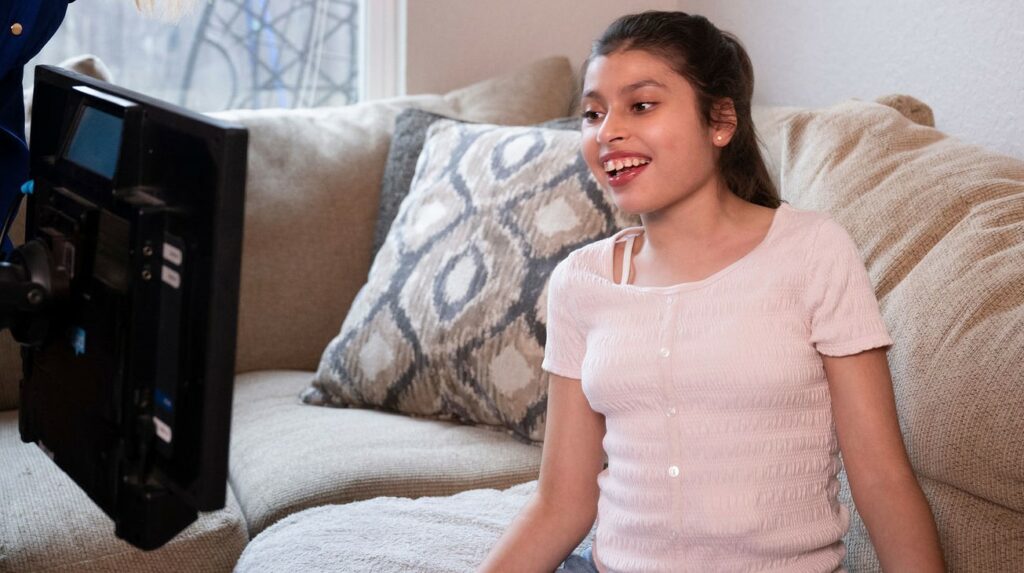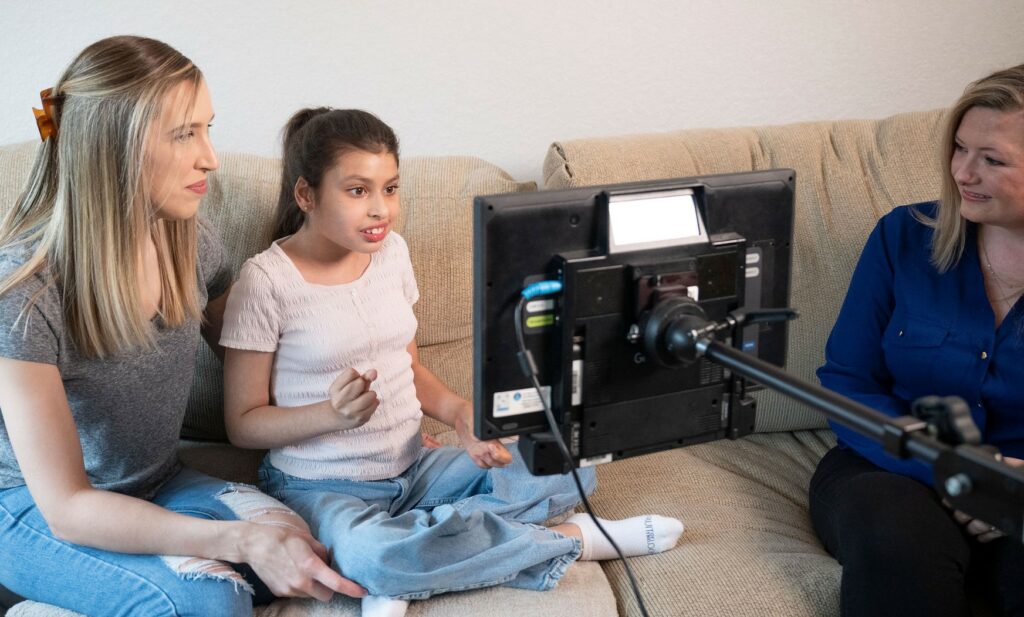In Texas, one of the most diverse states in the U.S., Spanish is not just a language; it is a vital part of everyday life for millions. With roughly 30% of Texas’ population identifying as Hispanic or Latino, it’s clear that language access is essential for providing the best care and services, especially for those who rely on Augmentative and Alternative Communication (AAC) devices.
However, Spanish-speaking individuals often face unique barriers when it comes to accessing and successfully using AAC, and these challenges can be compounded for those with conditions like aphasia or dysphasia. At Alamo Assistive Technology, we recognize these obstacles and are committed to offering bilingual services that support both the end user and their families. This blog explores some of the key barriers faced by Spanish speakers in the AAC space and the crucial role bilingual training and support play in overcoming them.
One of the most significant barriers for Spanish-speaking individuals is the lack of available resources in their native language. Many AAC systems are primarily designed and developed with English-speaking users in mind. This can create significant gaps in accessibility for Spanish-speaking users, making it harder for them to effectively learn and use their communication device. In fact, Spanish speakers often find themselves using AAC devices that are not fully tailored to their language, which can limit their ability to communicate with family, caregivers, and peers.
In Texas, where nearly 30% of the population speaks Spanish at home, this language gap is especially concerning. Furthermore, many Spanish-speaking individuals in the state come from families where there may not be a high level of English proficiency. In these cases, it’s essential to provide training and support in Spanish—not just for the end user, but also for family members, caregivers, and therapists.
When you add conditions like aphasia or dysphasia into the mix, the challenges multiply. Aphasia, which is an acquired language disorder that affects a person’s ability to communicate, and dysphasia, a milder form of aphasia, both complicate the process of adapting to AAC technology.
For Spanish-speaking individuals with aphasia or dysphasia, the difficulty is not just in using the AAC device itself, but in the training process, which requires specialized understanding of both the condition and the language. Spanish speakers may experience difficulty navigating AAC systems that are not adapted to their linguistic needs or their specific condition. Without proper training, the devices remain underutilized, and the individual’s ability to communicate effectively is compromised.
The language barrier compounds this problem, as family members and caregivers may struggle to understand the technology themselves, making it more difficult to provide consistent support. Additionally, the need for professionals who are familiar with both Spanish and the complexities of speech disorders means that there is often a shortage of resources available to Spanish-speaking communities.
A particularly troubling statistic is that only about 7-8% of speech-language pathologists (SLPs) in the United States are bilingual, and an even smaller percentage of AAC vendors offer bilingual services. This shortage makes it incredibly difficult for Spanish-speaking families to access the necessary support for using AAC devices effectively.
In Texas, where the demand for bilingual services is high, this lack of bilingual professionals is a significant barrier. For Spanish-speaking families who require AAC devices for their loved ones, the shortage of bilingual speech therapists and AAC vendors means that they may not have access to the full range of support they need. Without the proper guidance, families may struggle to understand how to use the technology and may not even be aware of the resources available to them.
At Alamo Assistive Technology, we understand that bilingual support is not just a luxury; it is a necessity. For Spanish-speaking families, the process of learning how to use an AAC device can be overwhelming. When you add the need for specialized care due to aphasia, dysphasia, or other conditions, it becomes even more crucial that family members, caregivers, and the care team receive training in their preferred language.
Bilingual training ensures that everyone involved in the individual’s care can communicate effectively and feel confident in using the AAC device. It’s not just about teaching the patient how to use the device; it’s about empowering the entire care team with the skills and knowledge they need to provide consistent, effective support. This training helps ensure that the device becomes a true tool for communication rather than an underused or abandoned piece of technology.

At Alamo Assistive Technology, we are proud to offer bilingual services to meet the needs of our diverse community in Texas. We understand the importance of language accessibility and are committed to providing Spanish-language training and resources for both end users and their support teams. Our bilingual staff ensures that every family, caregiver, and therapist can navigate the complexities of AAC technology with ease, no matter their language background.
In addition to our personalized bilingual training, we are proud to offer Smartbox Devices, which are designed to support a wide range of languages—including Spanish—ensuring that individuals with diverse linguistic backgrounds can access AAC technology that is tailored to their needs. Smartbox’s devices are versatile and can accommodate the growing demand for multilingual options, offering personalized communication solutions that allow users to express themselves in the language they are most comfortable with. Whether the user’s preferred language is Spanish, English, or another, these devices ensure that language is never a barrier to communication.
We also recognize the need for culturally competent care. Our team is trained not only in the technical aspects of AAC but also in understanding the unique challenges faced by Spanish-speaking families. We work closely with each family to ensure that they have access to all the necessary tools, training, and ongoing support to make the most of their AAC device.

At Alamo Assistive Technology, we believe that everyone deserves the opportunity to communicate, regardless of language, condition, or background. We are committed to eliminating the barriers that Spanish-speaking individuals face when using AAC technology. By providing bilingual training, ongoing support, and access to specialized resources, we help ensure that every individual has the tools they need to communicate effectively and independently.
In Texas, where the Hispanic and Latino population is large and growing, the need for bilingual AAC services has never been more urgent. We are proud to offer the support that Spanish-speaking individuals and their families need to succeed with their communication devices, and we will continue to fight for greater accessibility and inclusivity in the world of assistive technology.
By providing culturally sensitive, bilingual training and support, we can make sure that every voice—regardless of language—has the opportunity to be heard.